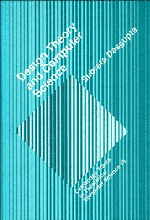12 - Design as Scientific Discovery
Published online by Cambridge University Press: 10 February 2010
Summary
INTRODUCTION
Recall (from chapter 5) that according to the evolutionary model a design at any stage of its development is best viewed as a tentative or conjectural solution; in other words, as a hypothesis which must be tested in the course of that evolutionary cycle and its successors.
It may also be recalled that in the TPD paradigm (chapter 9) the plausibility state of a constraint is determined by the evidence invoked in support of or against the plausibility of that constraint. Accordingly, it was noted (in section 9.4) that there is an analogy between plausibility states in TPD and the states of hypotheses or conjectures in science (see fig. 9.3).
Finally, in discussing the nature of program correctness proofs in chapter 8 (section 8.9), we noted Fetzer's (1988) suggestion that computer programs be viewed not as mathematical theorems (as is assumed in the FD paradigm) but as empirical, refutable, conjectures.
These various discussions appearing in diverse parts of this book collectively seem to suggest that there is some sort of a connection between the method of design and the method of science.
The subject of this penultimate chapter is precisely this issue. More exactly, I wish to examine whether, or under what conditions, the design process may legitimately be viewed as a process of scientific theory construction. I will anticipate later arguments by stating in advance the following thesis.
- Type
- Chapter
- Information
- Design Theory and Computer Science , pp. 353 - 380Publisher: Cambridge University PressPrint publication year: 1991



